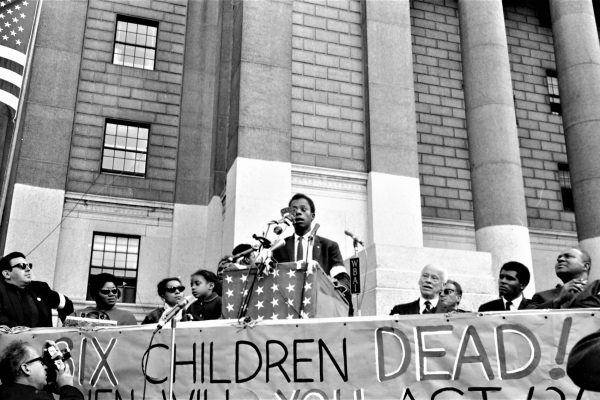What language should we use when we talk about slavery? Walter Johnson takes historians to task for using the word “dehumanize.” While I am skeptical about the dangers of the word itself, I strongly agree that the discourse about slavery should not be artificially separated from conversations about modern capitalism. How does the history of slavery look if we make more use of the language of capitalism?
One place to begin is to describe the abolition of slavery not as a human-rights measure but as a form of market regulation. In the abstract, this shift makes sense: abolition not only stripped slaveholders of their property, it also restricted property rights. It prevented men and women from being sold (or selling themselves) into bondage. Abolition also outlawed certain kinds of transactions and, as a regulation of “bonds,” it restricted the right to contract.
Framing abolition as market regulation inverts conventional ideas about slavery and capitalism, particularly the assumption that free markets are fundamentally connected to other human freedoms. The shared modifier “free” elides vast differences between free markets and other kinds of freedoms: freedom to move, to speak, to assemble, to love. History suggests that these freedoms can both expand together and move in opposition to one another. In the Atlantic world, “free” trade in goods (and bodies) expanded even as millions of Africans lost control over their lives and labor. The relationship between free markets and other freedoms is not inevitable.
Describing the abolition and amelioration of slavery as “market regulations” has the effect of recasting them as a series of trade deals. Concern for the enslaved played a role, just as concern for workers does in trade deals today. But so did economic growth and stability. Take the 1833 act that abolished slavery in the British Empire. The measure was a carefully negotiated set of compromises that looked out for the interests of the enslavers as well as the enslaved. Only slaves under the age of six were actually liberated. Older slaves were rebound to work during a period of apprenticeship, and planters were paid for their loss of property.
Compensated emancipation was the norm. Across the Atlantic, slaveholders were paid in cash, through a period of labor, or both. Even when slavery ended by war, the “expropriated” owners were sometimes paid for their “losses.” After the Haitian Revolution, the former slaves paid reparations to France to compensate their former masters. No one compensated the slaves. Even at moments of emancipation, the enslaved were never seen as the ones who had been expropriated.
If abolition was a form of market regulation, then the economic circumstances of slavery appear as an unfettered marketplace—at least from the perspective of capitalist planters. They could (and did) employ wage laborers. But they could also purchase slaves, uprooting them and relocating them to new geographies and fertile plots of soil. Once they had secured labor, planters could turn to both positive and negative incentives to spur action. None of this had yet been regulated.
The enslaved did not enjoy the same economic opportunities, but they nonetheless often participated in markets. Though they did not own their own labor, in some places they could aspire to purchase themselves. And they engaged in a wide array of smaller commercial transactions. As recent research by Justene Hill shows, these exchanges usually benefitted masters more than slaves, but unequal access is not unusual in capitalist market spaces. When employers sell goods to their workers, it often increases both their profits and their control over labor.
Just as the word “regulation” offers a fresh perspective on abolition, the words Johnson proposes—“commodification,” “securitization,” “instrumentalization,” and others—can tell us about how slavery functioned on the ground. A range of historians, including Stephanie Smallwood and Daina Ramey Berry, have already put some of this language to use. More terms could be added to the list, some of them used by slaveholders themselves. For example, in my own research on the history of accounting, I examine how planters “appreciated” and “depreciated” slaves and described it in these terms. They tracked the increasing value of enslaved children as they approached adulthood and the declining value of those who ran away, became sick, or simply grew old.
Take the word “commodify.” At its most general, it simply means to make marketable. But it also carries a more specific meaning: to transform into a commodity good. That is, something that is graded and measured, and thus fungible and interchangeable. From the perspective of the buyer, any unit of a commodity is identical to any another. One Grade A extra large egg. One bushel of No. 1 spring wheat. One bale of strict good middling cotton.
Planters developed rating scales and categories to do just this with their slaves. They priced them by height and occasionally by weight. They rated them as quarter, half, three-quarter, and full hands (a full “hand” being an able-bodied adult slave who could labor at a high level). This system allowed slaveholders to set a wide variety of human lives equivalent to one another. A gang of enslaved children rated as quarter- and half-hands, for example, could be summed and set equal to a smaller number of men and women of prime age. The process of commodification was not as complete as it was for other “goods”—there were no futures contracts for slaves. But the extent of commodification was remarkable. Before the closing of the Atlantic slave trade, “New Negroes” from Africa were even included in some prices currents right alongside the goods they grew. A 1785 price list, for example, includes a wide range of commodities, many of them grown and produced by enslaved peoples—coffee, tobacco, indigo, rice, and of course sugar, molasses, and rum. At the end of the list is “New Negroes, 30l to 40l cash” or “50l [to] 60l at 6, 9, or 12 months credit.”
Of course, even as the language of capital opens up new questions, it too falls short. So much of the vocabulary of modern capitalism is about reducing goods to something simpler than they are in order to adapt them to the market. To be commoditized is to be reduced to a commodity. To be securitized is to be structured into a schedule of payments and a hierarchy of claimants, and thus made ready for sale. To be instrumentalized is to be merely a tool. There is nothing inherently violent in these processes of simplification. But we balk at their application to lives. We are horrified to see men, women, and children subjected to this kind of reduction. It cuts at what it is to be human, then and now.
Ironically, then, applying the language of capital to the circumstances of slavery brings us back to the discarded word: “dehumanization.” Johnson eloquently explains how the term can inappropriately frame enslaved humanity in terms of “the bourgeois freedoms of classical liberalism.” But, used carefully, the word can trade this academic baggage for a simpler meaning. To speak of dehumanization can be a way of acknowledging what is lost in the language of capital. The Oxford English Dictionary traces the word “dehumanize” to the early nineteenth century and defines it as “to deprive of human character or attributes.” “Humanize” is older, dating to at least the early seventeenth century. Among its various meanings we find “to represent in human form.” Humanization and dehumanization characterize processes of representation, and they can be used to explore the ways the language of capital pushes toward the commodification, securitization, instrumentalization, and alienation of everything—even lives, if our laws allow it to do so.
The vocabulary of capitalism can help us to see the economic system of Atlantic slavery for what it was: an unfettered wilderness of exchange where even lives were up for sale. And the words we use to write the history of slavery—however imperfectly—can help us to describe the dangers of deregulated capitalism. One of the most basic lessons to be gleaned from the history of slavery is how readily men and women exploit and abuse one another, given the opportunity—how far everyday people will go in pursuit of power, influence, and profit, if the law allows them to do so.
This forum is featured in Race Capitalism Justice, now available in reprint. Order your copy today.








